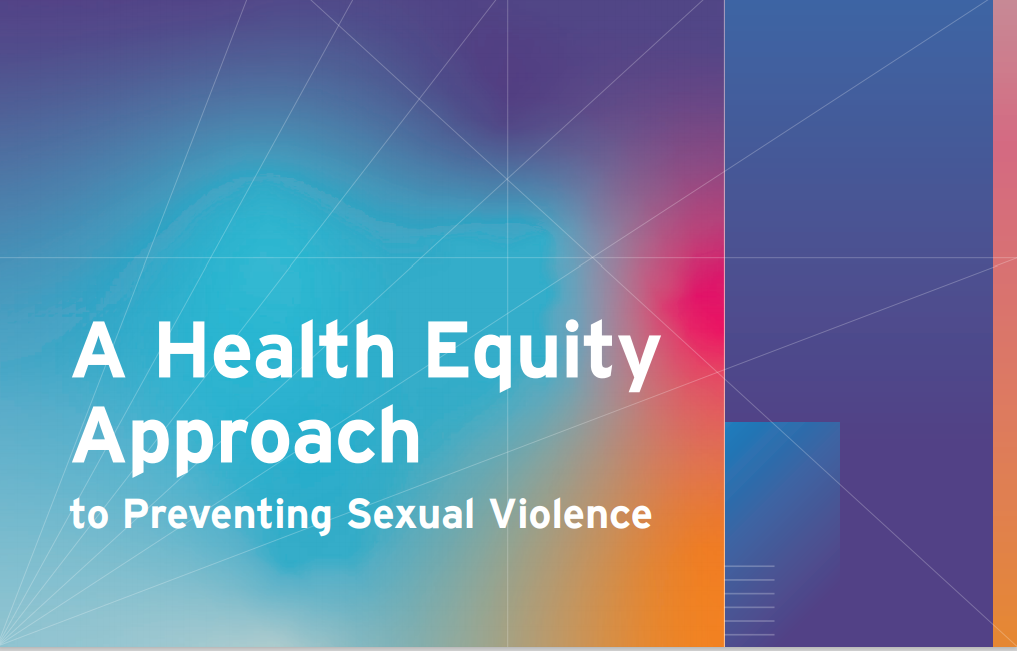
"A health equity approach to preventing sexual violence means that we need to both understand and address the factors that contribute to violence and safety and factors that expose some communities — especially communities that have been historically oppressed — to higher rates of sexual violence". (NSVRC, 2019)
Prefacing Health Equity:
Health equity refers to the equal right to the experience of health and wellness, including equitable access to services and resources, without any barriers or subpar care. It is achieved when disbalances in power, privilege, and social and economic inequality are leveled to make a more equal playing field. Good health correlates heavily on certain social determinants – like a stable income, affordable education, and a safe home.
Why is Advancing Health Equity Critical for Sexual Violence Prevention?
The links between sexual assault and health equity are many. In fact, communities at a higher risk for sexual violence also face a higher rate of health inequity. Preventing sexual violence relies on eradicating the roots of violence in society, one of which is unequal access to care and health resources — which we explore in our report with The Prevention Institute A Health Equity Approach to Preventing Sexual Violence. Disbalanced relationships of power — which create outcomes like racism, transphobia, sexism, and classism — are historically rooted in our society, meaning they are built deep into institutions like health care, housing practices, and laws. In addition to being related as outcomes of inequity, sexual violence also causes holistic health disparities. “Sexual harassment, abuse, and assault can have short- and long-term physical, emotional, and psychological effects on a person’s well-being and impact an entire community, from the culture and connections between people to the economic toll” (NSVRC, 2016).
To shift gears towards lasting change, we must advance health equity and sexual violence prevention, which requires:
1) Elevating community leadership and resilience,
2) Creating spaces for healing in prevention efforts,
3) Facilitating internal organizational change,
4) Addressing underlying factors that contribute to violence and safety, and
5) Partnering across fields and movements.
Elevating Community Leadership and Resilience
Members of affected communities must be at the core of leadership -- making decisions on their community from an insider and not an outsider point of view. Those most affected by sexual violence and health inequity offer the greatest insight on workable solutions for their communities. It is important that survivors and affected community members with lived experiences of inequality are approached as active leaders as opposed to passive consultants.
Creating Spaces for Healing in Prevention Efforts
“To foster health equity, it is important to recognize prevention and healing as connected.” Focusing on the importance of healing from sexual violence serves a dual purpose of prevention through awareness. Spaces which bolster transparent conversations where survivors aren’t silenced or overlooked challenges the normalization of sexual violence. Plainly put, we can’t work on prevention if we don’t accept that there’s a problem. When we stay stuck at square one unable to acknowledge that inequities and violence exist, we cannot fully support survivors in healing and prevent further violence from occurring by eradicating precursors. “Through connected efforts, communities can demonstrate willingness to take action on sexual violence as a community issue and together reshape culture.”
Facilitating Internal Organizational Change
True action happens when organizations don’t just talk the talk, but when they also walk the walk -- meaning they employ the same critical examination of their internal practices as they would the external world. Organizations must internally embody social justice frameworks to make sure things like racism, sexism, and transphobia are uprooted from their structure. For example, an organization dedicated to health equity should ask reflective questions like “are individuals with disabilities being heard and considered within our organization?,” “Are our spaces and approach accessible for everyone?,” etc.
Addressing Underlying Factors That Contribute to Violence and Safety
Factors like racism, sexism, transphobia, classism, and ableism contribute to sexual violence in many forms. Those who have historically benefited from inequality have used that power against those at its disadvantage in ways that were violent, oppressive, and generationally harmful. Fundamentally, disbalances of power are at the nucleus of violence and inequality. It is therefore important to address those inequitable power dynamics in all its forms, as multiple expressions of violence are often linked together by the same precursor.
Partnering Across Fields and Movements
Preventing violence in all forms requires interdisciplinary engagement and the cross cutting of domains. The pervasive nature of systems of oppression demands an all-hands-on-deck mindset with everyone working together to intervene upon the status quo and enact lasting change. Challenging the current norms by uprooting and refusing to reproduce them is a collective effort. Just as people's lives are diverse and traverse through many different intersections, so should organizations. As previously mentioned -- organizations should be reflective of the populations they serve (who are diverse and multidimensional in identity and experience). “Partnerships driven by community leadership can include fields like public health, community development, businesses/workplaces, social justice, and sports, among others.”
Working Together to Create Equitable, Respectful Communities
In addition to outlining the relationship between health equity and sexual violence prevention, the resource celebrates organizations doing the work out in the world and within their communities. These organizations have been spotlighted throughout the piece due to their dedication to dismantling disbalances of power while using collective, community driven approaches. Featured organizations include:
Alaska Network on Domestic Violence and Sexual Assault
Bloomington Inclusion Collaborative
Colorado Department of Public Health and Environment
Indiana Coalition Against Domestic Violence
Michigan Coalition to End Domestic and Sexual Violence
Multicultural Efforts to End Sexual Assault
New Jersey Department of Children and Families’ Division on Women
Oregon Coalition Against Domestic and Sexual Violence
Visioning B.E.A.R. (Balance, Equality, and Respect) Circle Intertribal Coalition
Access the full piece “A Health Equity Approach to Preventing Sexual Violence”
